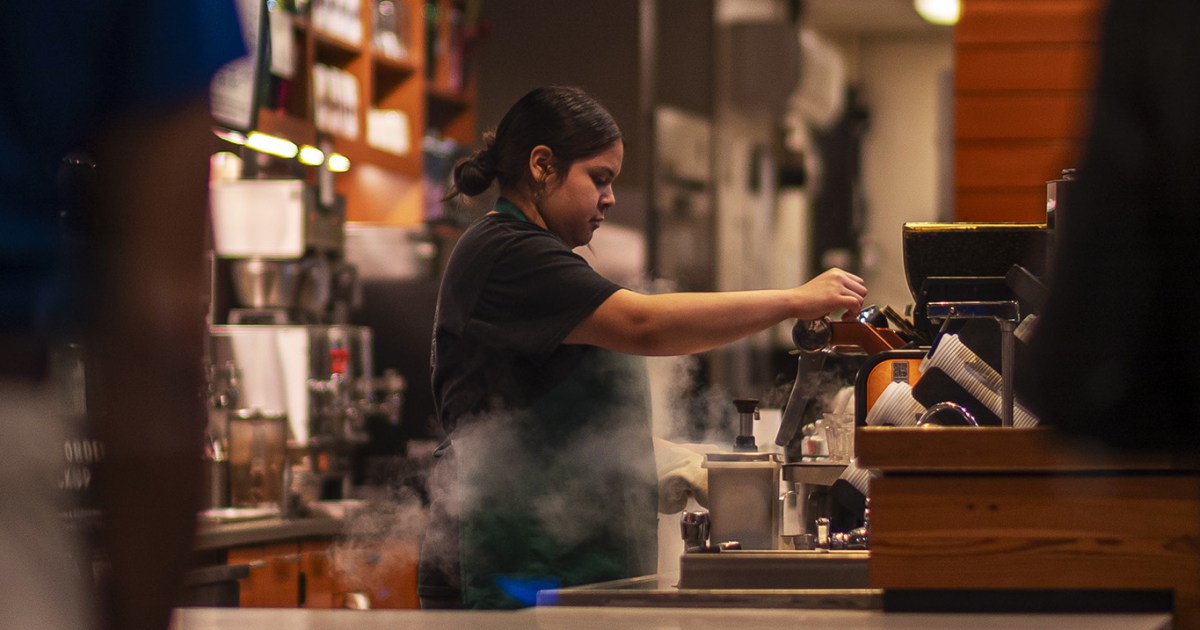The U.S. added 254,000 jobs in September, far exceeding expectations, while the unemployment rate fell from 4.2% in August to 4.1%.
Forecasts were for 150,000 new jobs added last month. Data from previous months were also revised upward: August by 17,000 to 159,000, and July by 55,000 to 144,000.
Economists had expected the unemployment rate to be unchanged at 4.2%.
The unexpectedly high jobs total came with just about a month left before Election Day, as the economy comes under even greater scrutiny during the campaign between Vice President Kamala Harris and former President Donald Trump.
Harris has touted the Biden administration’s progress in adding jobs during the Covid recovery period, while Trump has sought to paint the economy as a disaster, despite data showing otherwise.
And more relief is likely in the offing: The Federal Reserve’s larger-than-expected interest rate cut last month is still taking hold, something that economists say should help spur demand in industries sensitive to borrowing rates, such as manufacturing, housing and autos.
Forecasts are for an additional quarter-point rate cut at the Fed’s next meeting in November and another in December, with more to come next year.
“This is … an economy at full employment in an economy best described as [in] a robust expansion,” Joseph Brusuelas, chief economist at RSM US LLP financial group, said in a post on X.
A significant caveat to the report was the rate of response to the Bureau of Labor Statistics’ monthly survey: At just 62%, it was the lowest for a September report since at least 2010.
That could set the stage for a substantial revision next month as more data comes in.
And hiring was not evenly distributed — concentrated instead in construction, health care, leisure and hospitality, and government jobs. White-collar sectors like business and professional services and finance added a negligible number of new jobs, while hiring outright declined in manufacturing.
While the economy continues to add jobs at a steady clip, signs of ongoing labor market weakness had otherwise become unmistakable before Friday’s report.
The Bureau of Labor Statistics reported this week that the hiring rate had declined to just 3.3%, its lowest level since October 2013, when the U.S. economy was just beginning to emerge from the Great Recession.
Last week, the Conference Board’s closely watched consumer confidence survey fell by the largest amount since August 2021, driven largely by concerns about the labor market. Less than 1 in 3 respondents now say jobs are “plentiful,” while nearly 1 in 5 say they are “hard to get.”
In a statement accompanying the release, Dana M. Peterson, chief economist at the Conference Board, said that although the labor market remains “quite healthy,” workers are encountering fewer hours, slower payroll increases and fewer job openings.
Guy Berger, director of economic research at the Burning Glass Institute, a labor research and consultancy group, said that a few months ago finding a new job was “tough.”
These days, Berger said in advance of Friday’s report, he would downgrade that to “really tough.” Firms are simply figuring out how to do more with fewer employees, something further reflected in rising productivity growth.
“This could be a new thing — a new strategy companies are pursuing,” Berger said. “It definitely seems different.”
In an email following Friday’s report, Berger said a new trend had not yet been established.
“It’s just one month and one report,” he wrote. “I think the gradual underlying trend of deterioration in the labor market is probably still in place. The good news is even if this is true, we now have more breathing room for the Fed to ease and keep the labor market in a relatively decent place.”
And a turnaround in fortunes may not soon come for job searchers either, he said. While Federal Reserve officials have indicated they do not wish to see further signs of labor market deterioration, they are not going to allow it to “come to a boil,” either, especially given that the hiring frenzy of the early part of the pandemic reopening period coincided with a period of surging inflation.
“The chance of us getting to a good time to find a job — it could be a while,” Berger said.
The stress is starting to show up in other data: The share of unemployed workers who have been out of work for more than six months has now climbed seven of the last 10 months and is now at about 23%.
That is about where it was before the onset of the pandemic. But it is an indication that losing a job increasingly means a longer spell on the sidelines.
There remain positive economic indicators: Layoffs and new filings for unemployment remain subdued. And economists say the Federal Reserve’s latest larger-than-expected rate cut — with more cuts likely to come — should help spur activity in sectors of the economy that rely on lending, like housing, manufacturing and autos.
Gas prices are also unusually low, helping support additional consumer spending.
With some luck, the U.S. should be able to avoid recession, Berger said. But the economy could easily tip into a more precarious state.
For job seekers, that precariousness has become full-blown.
“There is now a major disconnect between people looking for jobs and people who have them,” Berger said.

